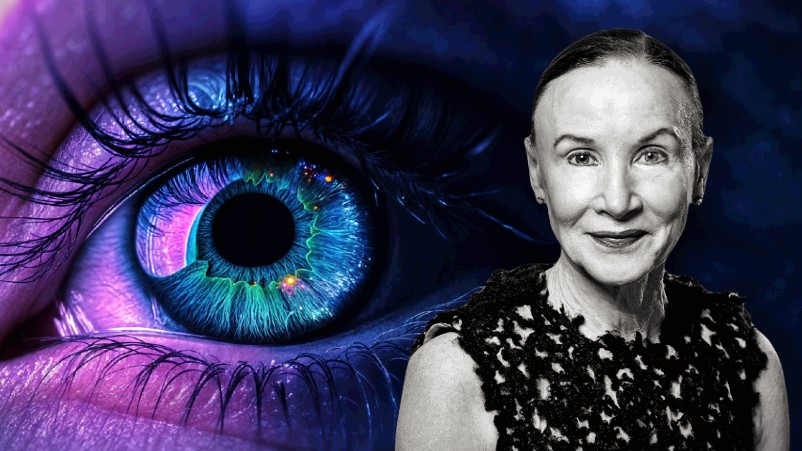'Better than NPS': How Macquarie Bank used 2 million customer interactions and a rare Customer, People & Culture boss to fix disjointed experiences

The road to CX hell is paved with good intentions, and to ensure customers aren't assailed with disjointed experiences you need to link customer experience, marketing, and digital, with employee experience, says Rosalind Coffey, Head of People, Culture & Client Experience at Macquarie Bank. By analysing 2 million interactions with its contact centre each year, the bank's 'Listen, Learn, Act, Measure' model gives a measurement tool providing more powerful insights than just its regular net promoter score survey. But Coffey's role at the bank, which gives her direct insight into the bank's impact on both customers and employees, is rare, says Forrester Research Principal Analyst Riccardo Pasto – who also argues behind every great customer experience is a great employee experience – and not just front-line employees.
What you need to know:
- Macquarie Bank's strategy is built on serving customers who prefer digital-first banking, and it has aligned customer, partner and employee experiences to match that goal.
- No one comes to work wanting to impose disjointed experiences on customers, according to Rosalind Coffey, Macquarie's Head of People, Culture & Client Experience. But that doesn't mean they aren't doing just that, even with the best intentions, she says.
- By analysing 2 million call centre connections each year, Macquarie has developed its Listen, Learn, Act, Measure model that provides a more powerful and usable measurement tool than just traditional NPS.
- Meanwhile Forrester Research's principal analyst and CX specialist, Riccardo Pasto, says behind every great customer experience is a great employee experience.
What more can you ask for? You might get an ‘X’ per cent return on your Net Promoter Score emails but you get two million invitations to learn from your clients calling in.
Macquarie Bank’s strategic decision to recreate itself as a digital bank involved the uncomfortable acceptance that a subset of its customers would determine the fifth of Australia’s big four banks was no longer right for them.
But once the decision was taken, it provided the north star to develop the kinds of digital experiences that would drive user engagement, loyalty, and growth, according to Rosalind Coffey, Head of People, Culture & Client Experience at Macquarie Bank.
Success for Macquarie relies on linking customer experience, marketing and digital, and understanding the important interplay of customer, partner, and employee experiences. As evidence, she presented the home loan journey maps of customers, partners and employees. The first two were both relatively straightforward, but the third – for employees, was a rats nest of complexity, and an area where Macquarie knew it needed to act.
However, Macquarie’s ability to execute may also be partly an artefact of its structure, according to Forrester principal analyst Riccardo Pasto, who told Mi3 that having a People and Culture leader involved so closely in the customer experience conversation to the extent that Coffey is, is quite unusual.
Behind every great customer experience is a great employee experience, he said, but cautioned that most organisations have a narrow vision of the employee experience when it relates to customer experience.
"That is usually the customer-facing frontline employee where that connection is a little bit more obvious. Usually when there is in the dip in the quality of customer journey... they'll often also see a dip in the employee journey as well. That makes sense because I'm calling you for help. And you don't have the right tools, or you don't know who I am. That conversation not only becomes awkward, but also it's not helpful, it's not delivering any value."
Most companies are actually quite good at picking up on that in Pasto's experience. But there are also employees who sit in the middle and back office and have an impact on the customer journey and that's often were the disconnect happens, he said. "Because oftentimes, so much is siloed. Every team is just looking at a couple of interactions, without understanding or how those interaction fit in the broader cost, product context of a customer journey. They don't have that visibility."
Macquarie's decision to have a people and culture leader with visibility into both employee and customer experiences was a rare thing, he said.
Strategy first
Speaking at last month's Forrester Research CX event in Sydney, Coffey told delegates: “We are a digital bank, we can't possibly compete with banks that have branches all over the country, that serve 25 per cent of the population each. It wasn't really feasible.”
Instead, Macquarie identified what it believes is a gap for people who did want to do more of their banking digitally.
“That's where we went heavy, we said, ‘we are going to be a digital bank'.”
From a customer experience perspective, the bulk of their customers interactions should be intuitive digital interactions.
“And intuitive is really important. Things should just work. It should just be like picking something up when you don't have any instructions.”
A second digital self-service layer provides support for when they can’t complete their tasks on digital channels, with personal interactions reserved for tasks that are high value to both the customer and to Macquarie Bank, or for matters that are highly personalised.
“And with that came the acknowledgement that we might not be the bank for everybody. We want to be the bank for customers who are happy and excited about having an excellent outstanding digital banking experience. So, we are not looking for the whole market.”
That decision necessarily impacted everything about the way the business went to market. “That was a really important foundational step for us to really identify our target market.”
Macquarie has three key businesses that face the market – personal banking, a business bank principally targeting small to medium businesses, and a wealth management business that provides a platform for wealth advisors as well as a private bank for clients.
“When I first joined Macquarie about nine years ago, if you went to one of those, or another, you felt like you were going to three very different distinct organisations.”
Each may have delivered great experiences, she said, but there was no level of consistency between them.
That customer experience also reflected organisational culture; “From the perspective of the way we considered the client at the time, it was very narrow, ‘we thought about the client of my channel.’ ”
Now the Macquarie executive says the bank is on a journey to help customers “move from disparate albeit incredibly well intended experiences from all the different parts of our business into one whereby it is a seamless and consistent experience in digital for the most part, and in person where that matters to most of the clients. And to turn this less than happy experience into a brilliant one where clients then become loyal and stay with us longer and advocate for us as a great place to bank.”
Everyone says they want to put customers at the heart of what they do, and they sincerely mean, believe and intend it, but the reality for customers can be different, she said.
“From the customer's perspective, really, what they're experiencing is all that great intent from everybody, all at once, usually not in a very joined up way. And from the customer perspective, a lot of the time, it pings from all sorts of different areas that don't join up to a seamless experience.”
That was true even if it was all founded in incredibly strong intent to deliver great customer experiences, said Coffey.
We now have an objective and key result this year around call reduction for certain call types. Because when somebody's calling us about that, it means we failed in our mission to provide intuitive digital experiences, and intuitive digital self service.
Measuring success
Digitising the bank, building online self-service centres, and restricting face to face interactions to high value or highly personalised interactions did not put a stop to customer interactions. Indeed, the investments Macquarie made in its call centres have now given it even greater insights into customer needs, and how to further improve the way the bank works. And importantly it has given the bank a new point of measurement, beyond traditional satisfaction surveys and net promoter scores.
"We get people calling us to tell us something. What more can you ask for? You might get an ‘X’ per cent return on your Net Promoter Score emails, but you get 2 million invitations to learn from your clients calling in. We really have focused on what are the insights we can gain through our contact centre and through other channels where we hear from clients who have been proactively contacting us," she said.
"As a digital bank, we are delighted to interact with our clients in person for high value, high impact, highly personalised matters. But two million times a year, they were calling us. Sometimes they were high impact and personalised and a lot of the time they weren't."
She said Macquarie did a "really deep dive to understand the root causes and drivers and calls to our contact centre" to understand how it could classify high value calls versus those that it should be able to be service digitally, then developed a program where it could drill down and address the root causes from the low value calls one by one by one, and then measure the impact of addressing those calls.
"We now have an objective and key result this year around call reduction for certain call types. Because when somebody's calling us about that, it means we failed in our mission to provide intuitive digital experiences, and intuitive digital self service."
She also described the program as an excellent way to engage the entire business. "The contact centre can't stop the calls, they just pick up the phone when it rings," Coffey said.
But what the contact centre can do is to provide insights into what's happening in the world of real things back into the product, technology, and to help manage their programs.
"So now instead of just a net promoter score [results from the] 10 or 15 per cent of clients who answer surveys, we now have insights through all these channels. We have client insights through our net promoter score, our contact centre, our complaints teams, through social media, and then other productive insights that we are gaining as well when people attend [in person]," she said.
"Now we're putting those into a funnel. And we've got this model called 'Listen, Learn, Act, Measure', because we want people to do something with those insights. You can have all the insights in the world, but if you don't do something with them, there's no point."
Culture matters, but so do the tools
"We took a step back and asked, what's our vision for our clients. We want to start to say we understand first of all, and then define our intended experience. We need to build capability. Great intention is not enough. And that's an excellent foundation, but it's not enough, there's actually technical capability that people need in order to know that they are getting out of their own way and getting out of their own ideas, to build great experiences."
"The culture needed to change as well. So it's not my plan. It's our client." she said.
Finally, measuring impact is also critical, said Coffey. "What gets measured, gets done."
"Why did we bother to do any of these things? It was grounded in loyalty and advocacy. Ultimately, if customers stay with you longer, and they become people who promote your organisation, they tell their friends and family and colleagues that you're a great place to bank, and you should go back there too. What better measure of satisfied customers could you have than that level of advocacy?"


